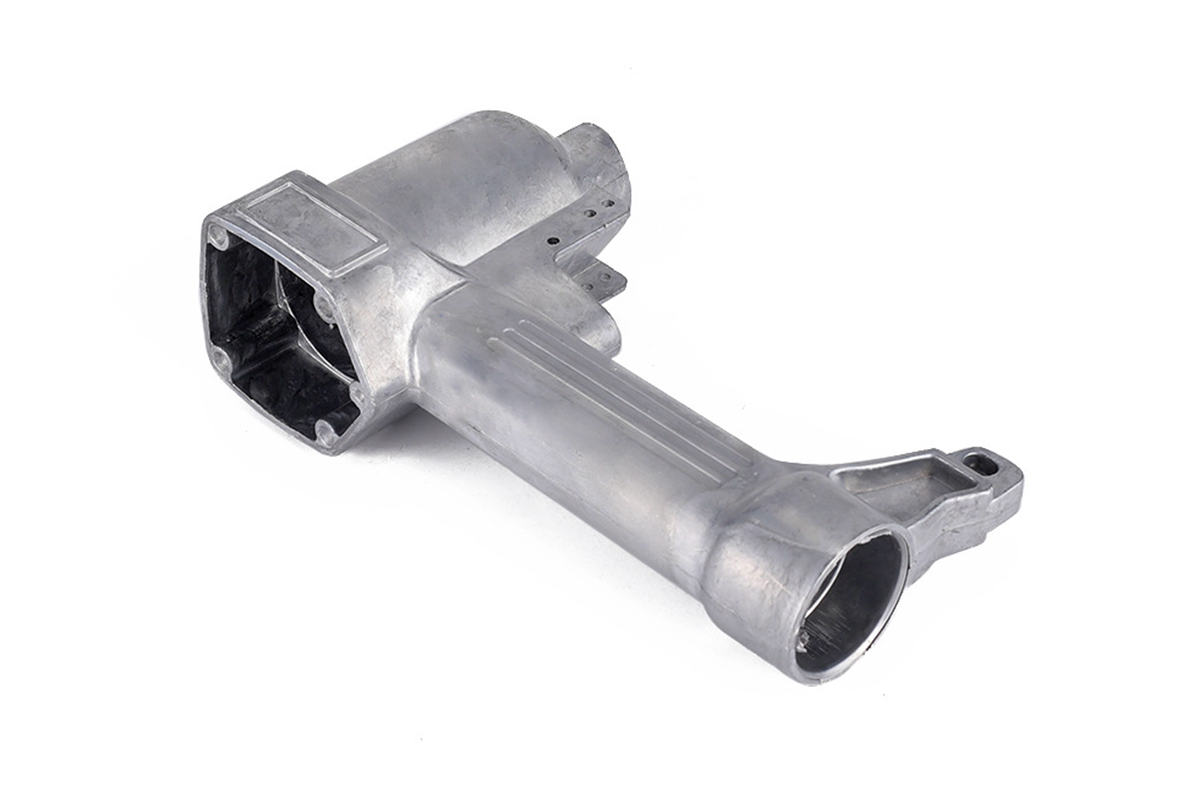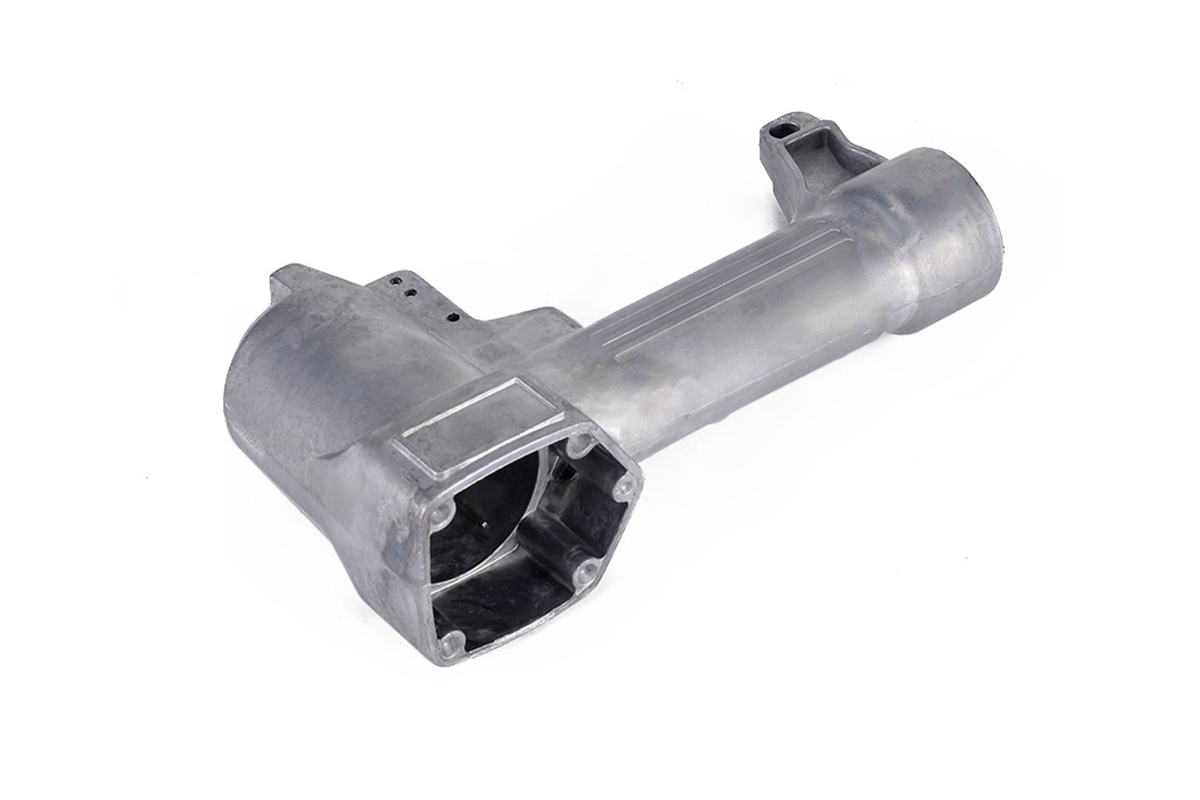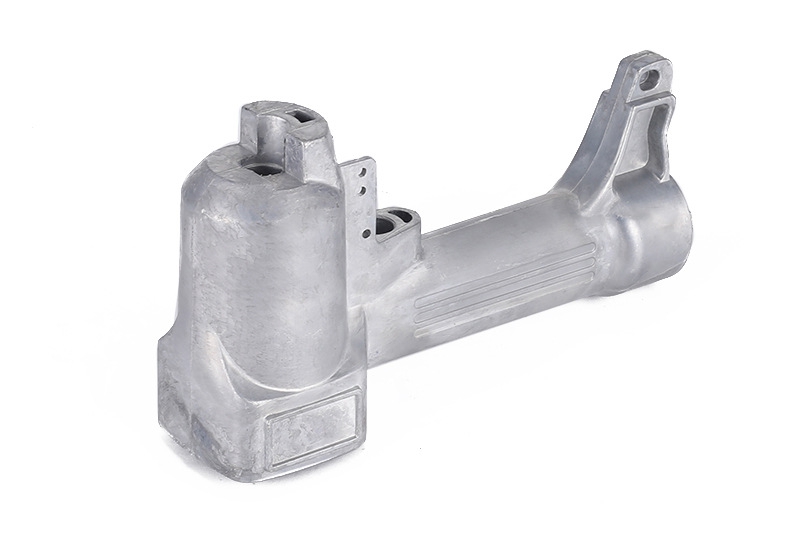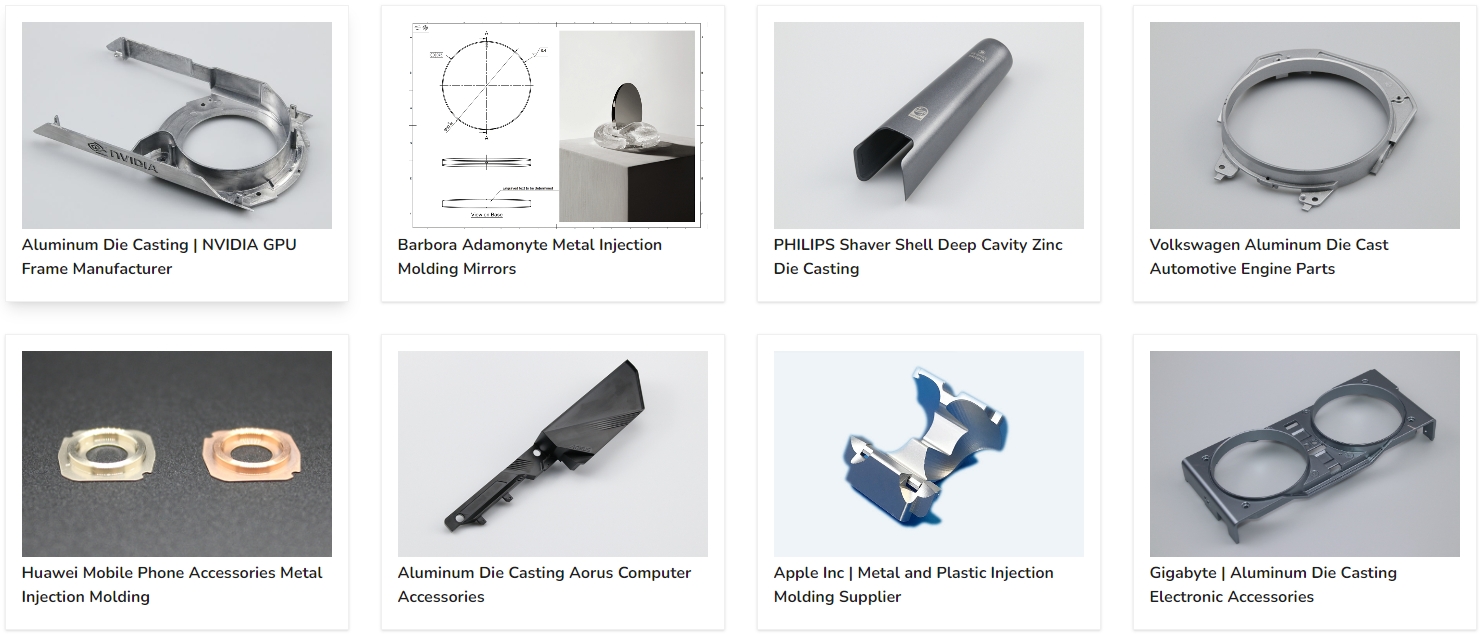Aluminum Die-Casting: Manufacturing EV Charging Gun Housings
The demand for electric vehicles (EVs) is rapidly increasing as the world shifts towards sustainable transportation. A crucial component of this transition is the infrastructure that supports EVs, particularly charging solutions. Among these, the charging gun housing plays a vital role in ensuring the safe and efficient transfer of electricity from the charging station to the vehicle.
The charging gun housing must meet stringent durability, safety, and performance standards. It makes the choice of manufacturing method and material critical. Aluminum die-casting is optimal because it efficiently produces high-precision, durable, and lightweight components. This blog will delve into the intricacies of aluminum die-casting for e-mobility charging gun housings, exploring the material selection, die-casting and post-processing technologies, surface treatment options, and the challenges faced during manufacturing. We'll also discuss innovative solutions to these challenges, providing a comprehensive understanding of the process from start to finish.
Whether you're a manufacturer looking to improve your production processes or an EV enthusiast interested in the technical details behind charging infrastructure, this article will offer valuable insights into the world of aluminum die-casting for e-mobility charging gun housings.

Die-Casting of Charging Gun Housing
Definition and Process Overview
Die-casting is a versatile manufacturing process that involves injecting molten metal into a mold cavity under high pressure. This method is particularly suitable for producing complex shapes with high precision and excellent surface finish. For e-mobility charging gun housings, aluminum die-casting stands out due to its ability to meet the demanding requirements of the application.
In the die-casting process, aluminum alloy is melted and injected into a precisely engineered steel mold. The high pressure ensures that the molten metal fills every intricate mold detail, creating an accurate and consistent component. After the metal solidifies, the mold is opened, and the casting is ejected, ready for further processing.
Advantages of Die-Casting for Charging Guns
High Precision and Consistency: Die-casting produces parts with tight tolerances, typically within ±0.1 mm. This precision is essential for charging gun housings, where accurate fit and alignment are crucial for functionality and safety.
Durability: Aluminum die-cast components exhibit excellent mechanical properties, including high strength and wear resistance. It ensures that the charging gun housing can withstand daily use and environmental exposure.
Lightweight: Aluminum is significantly lighter than other metals, such as steel, which helps reduce the overall weight of the charging gun, enhancing its ergonomics and ease of use.
Production Efficiency: Die-casting is a high-speed production method that produces thousands of parts daily with minimal downtime. This efficiency translates into cost savings and quickly meeting high demand.
Superior Surface Finish: The smooth surface finish achieved through die-casting reduces the need for extensive post-processing and provides a good base for subsequent surface treatments.
Die-casting is a proven method for manufacturing high-quality, reliable charging gun housings for the e-mobility sector. By leveraging the advantages of this process, manufacturers can ensure that their products meet the stringent requirements of modern electric vehicle infrastructure.
Material Selection
Why Aluminum?
Aluminum is the material of choice for e-mobility charging gun housings due to its unique combination of properties that meet the demanding requirements of this application. Here are the primary reasons why aluminum is preferred:
Lightweight: Aluminum is about one-third the weight of Steel, making it ideal for handheld devices like charging guns. The reduced weight enhances user comfort and reduces fatigue during use.
Corrosion Resistance: Aluminum naturally forms a protective oxide layer that is highly corrosion-resistant. It is crucial for charging gun housings exposed to various environmental conditions, including moisture and temperature fluctuations.
Thermal Conductivity: Aluminum has excellent thermal conductivity, which helps dissipate heat generated during the charging process. This property is essential to prevent overheating and ensure safe operation.
Strength and Durability: Although lightweight, aluminum offers good mechanical strength and durability. It can withstand the physical stresses and impacts that charging gun housings may encounter during everyday use.
Material Properties Comparison
When selecting a material for charging gun housings, aluminum's benefits are evident compared to other materials like plastics and other metals:
Plastics: While plastics are lightweight and corrosion-resistant, they generally lack the mechanical strength and thermal conductivity that aluminum provides. It makes plastics less suitable for components that must endure repeated use and exposure to high temperatures.
Other Metals (e.g., Steel): Although Steel offers high strength, it is much heavier than aluminum, which can negatively impact the ergonomics of the charging gun. Steel is also more corrosion-resistant if adequately treated, adding to maintenance concerns.
Alloy Considerations
In the aluminum die-casting process, selecting the proper alloy is crucial to achieving the desired balance of properties. Common aluminum alloys used in die-casting include:
Aluminum Alloy A380: This is one of the most widely used die-casting alloys due to its excellent combination of mechanical properties, corrosion resistance, and ease of casting. It offers good strength and thermal conductivity, making it suitable for charging gun housings.
Aluminum Alloy ADC12: Known for its good castability and excellent finishing characteristics, ADC12 is often chosen for parts requiring high dimensional stability and smooth surface finishes.
Aluminum Alloy AlSi10Mg: This alloy provides high strength and excellent thermal properties. It benefits components that need to endure higher operational temperatures and mechanical loads.
Die-casting and Post-Processing Technology
Tooling and Mold Creation
The foundation of a successful die-casting process lies in the precision and quality of the tooling and molds. Creating the molds for charging gun housings involves several critical steps:
Design and Engineering: The mold design process starts with detailed CAD models of the charging gun housing. These models create molds that ensure the final product meets all specifications. Key considerations include part geometry, wall thickness, and the placement of gates and vents to ensure proper metal flow.
Material Selection for Molds: Molds are typically made from high-quality tool steels to withstand the high pressures and temperatures of the die-casting process. These materials provide the necessary durability and longevity to produce large volumes of parts.
Precision Machining: The molds are machined to very tight tolerances, often within ±0.01 mm. This precision ensures that the final cast parts are accurate and consistent. Advanced CNC machining techniques are employed to achieve the required level of detail and finish.
Die-Casting Process
The die-casting process for aluminum charging gun housings involves several key stages:
Melting and Injection: Aluminum alloy is melted in a furnace and injected into the mold cavity under high pressure, typically between 10,000 and 30,000 psi. The high pressure ensures that the molten metal fills even the most intricate parts of the mold, producing a part that closely matches the design specifications.
Cooling and Solidification: The aluminum quickly cools and solidifies once the mold is filled. The cooling time can vary depending on the part's complexity and thickness. However, it is generally rapid, enabling high production rates.
Ejection and Trimming: After solidification, the mold is opened, and the casting is ejected using ejector pins. The casting then undergoes trimming to remove any excess material, such as flash or runners, resulting from the casting process.
Post-Processing Techniques
Die-casting post-processing steps are essential to achieve the desired final product quality:
Machining: Precision machining is often required to achieve tight tolerances and add features that cannot be produced through casting alone. It includes drilling, tapping, and milling operations.
Deburring and Polishing: To ensure a smooth surface and remove any residual burrs from the machining process, parts are deburred and polished. This step is crucial for aesthetic and functional reasons.
Heat Treatment: Depending on the specific requirements, the castings may undergo heat treatment processes, such as aging or annealing, to enhance mechanical properties like strength and flexibility.

Quality Control: Rigorous quality control measures are implemented throughout the post-processing stages. It includes dimensional inspections using coordinate measuring machines (CMM), surface finish checks, and non-destructive testing (NDT) methods to detect internal defects.
By employing advanced die-casting and post-processing technologies, manufacturers can produce high-quality, reliable charging gun housings that meet the stringent demands of the e-mobility industry. This comprehensive approach ensures that each component meets and exceeds industry standards for performance and durability.
Surface Treatment Technology
Importance of Surface Treatment
Surface treatment enhances aluminum charging gun housings' performance, durability, and aesthetics. Proper surface treatment ensures that the housings can withstand harsh environmental conditions, resist wear and corrosion, and maintain their structural integrity over extended periods.
Types of Surface Treatments
Several surface treatment techniques are commonly applied to aluminum die-cast components, each offering specific benefits:
Anodizing
Process Overview: Anodizing involves an electrochemical process that creates a thick, protective oxide layer on the aluminum surface. This layer enhances corrosion resistance and can be dyed in various colors for aesthetic purposes.
Benefits: Improved corrosion resistance, enhanced wear resistance, and better adhesion for subsequent coatings or paints.
Powder Coating
Process Overview: Powder coating involves applying a dry powder to the aluminum surface, which is then cured under heat to form a hard, protective layer. This process provides a durable and attractive finish.
Benefits: High resistance to chipping, scratching, and fading; wide range of colors and finishes available; environmentally friendly with no volatile organic compounds (VOCs).
Electroplating
Process Overview: Electroplating deposits a thin metal layer, such as nickel or chrome, onto the aluminum surface through an electrochemical process. This layer can enhance the surface properties and appearance.
Benefits: Increased hardness, improved corrosion resistance, and enhanced aesthetic appeal.
Painting
Process Overview: Painting involves applying liquid paint to the aluminum surface, which is then cured to form a protective and decorative layer. Various application methods can be used, including spray painting and dip coating.
Benefits: Wide variety of colors and finishes, good corrosion protection, and cost-effective for large-scale production.
Application and Benefits
Each surface treatment technique offers specific advantages that can be tailored to the requirements of charging gun housings:
Anodizing: Ideal for components requiring high corrosion resistance and aesthetic customization. Commonly used for parts exposed to outdoor environments.
Powder Coating: Suitable for housings that need a durable, attractive finish with excellent resistance to wear and environmental exposure. It is also environmentally friendly, making it a preferred choice for many manufacturers.
Electroplating: Best for applications needing increased surface hardness and enhanced visual appeal. It is often used for decorative and functional purposes.
Painting: Versatile and cost-effective, making it a good option for mass production with various color and finish requirements.
Chemical Conversion Coating (Alodine): Used to improve paint adhesion and provide essential corrosion protection, especially for parts requiring electrical conductivity.

Difficulties in Manufacturing Charging Gun Housing
Common Challenges
Porosity:
Issue: Porosity occurs when small voids or air pockets form within the casting during solidification. These voids can compromise the charging gun housing's structural integrity and mechanical properties.
Impact: Reduced strength, potential for leaks, and increased likelihood of failure under stress.
Warping:
Issue: Warping happens when different casting parts are excellent and solidify at different rates, causing the component to distort.
Impact: Difficulty assembling components, misalignment issues, and compromised fit and function.
Maintaining Tight Tolerances:
Issue: Die-casting requires precise control to achieve tight tolerances. Variations in temperature, pressure, and material properties can lead to deviations from the desired dimensions.
Impact: Parts may not fit together correctly, leading to increased wear and potential failure during use.
Surface Defects:
Issue: Surface defects such as roughness, blisters, and inclusions can occur during casting.
Impact: Poor aesthetic appearance, reduced corrosion resistance, and increased need for post-processing.
Thermal Management:
Issue: Charging gun housings must effectively dissipate heat generated during charging. Proper design or material selection can lead to adequate thermal management.
Impact: Overheating, reduced performance, and potential safety hazards.
Complex Geometry:
Issue: Charging gun housings often have complex shapes with thin walls, intricate details, and tight radii, which are challenging to cast accurately.
Impact: Increased risk of defects, higher reject rates, and more challenging manufacturing processes.
Impact on Production and Quality
These challenges can significantly impact the final product's production process and quality. Increased defect rates lead to higher scrap rates, increased production costs, and longer lead times. Additionally, quality issues can result in customer dissatisfaction, warranty claims, and potential safety recalls, all of which can harm the manufacturer's reputation and financial performance.
Solutions to Manufacturing Challenges
Innovative Solutions
Advanced Mold Designs:
Description: Utilizing cutting-edge software for mold design and simulations helps predict potential issues before production begins.
Implementation: Techniques like conformal cooling channels and optimized gating systems ensure even cooling and reduce the risk of defects such as warping and porosity.
Benefits: This approach minimizes the occurrence of defects, leading to higher-quality products and reduced scrap rates.
Vacuum-Assisted Die-Casting:
Description: This technique involves creating a vacuum in the mold cavity before injecting the molten aluminum.
Implementation: By removing air from the mold cavity, vacuum-assisted die-casting significantly reduces the likelihood of air entrapment and porosity.
Benefits: The result is a denser, more robust casting with fewer defects and improved mechanical properties.
Real-Time Monitoring Systems:
Description: Implementing real-time monitoring systems allows for continuous observation and control of the die-casting process.
Implementation: In real-time, sensors and data analytics tools monitor parameters such as temperature, pressure, and metal flow rates.
Benefits: Immediate detection and correction of process deviations lead to consistent product quality and reduced downtime.
Quality Control Measures
Non-Destructive Testing (NDT):
Techniques Used: X-ray inspection and ultrasonic testing detect internal defects like porosity and inclusions.
Implementation: These tests are conducted on random samples or critical components to ensure the integrity of the casting without damaging it.
Benefits: Early detection of defects allows for corrective actions before parts reach the customer, ensuring higher reliability and safety.
Dimensional Inspections:
Techniques Used: Coordinate Measuring Machines (CMM) and laser scanning to verify that parts meet the required dimensional tolerances.
Implementation: Detailed inspections are performed at various stages of production to ensure consistent adherence to specifications.
Benefits: Ensuring tight tolerances improves the fit and function of assembled parts, reducing the risk of failure in the field.
Surface Finish Checks:
Techniques Used: Visual inspections and surface roughness measurements are conducted to ensure high-quality surface finishes.
Implementation: Inspectors use calibrated instruments to measure surface roughness and identify defects that could affect the part's performance or aesthetics.
Benefits: High-quality surface finishes enhance corrosion resistance and reduce the need for additional post-processing.
Case Study: Neway's Approach
Project Overview:
Client Requirements: Neway undertook a project to manufacture charging gun housings for a leading electric vehicle (EV) charging station provider. The client required high precision, complex geometry, and robust thermal management.
Project Scope: The project produced thousands of charging gun housings with tight tolerances and consistent quality.
Innovative Techniques Used:
Vacuum-Assisted Die-Casting: To address porosity issues, Neway implemented vacuum-assisted die-casting. It significantly reduced air entrapment and improved the density and strength of the castings.
Advanced Mold Designs: Neway utilized conformal cooling channels in the mold design to ensure uniform cooling and minimize warping. Real-time monitoring systems were also integrated to maintain optimal casting conditions.
Results and Customer Feedback:
Quality Outcomes: The final products met all specifications, including tight tolerances and high surface finish quality. Rigorous testing confirmed the reliability and performance of the charging gun housings.
Customer Satisfaction: Positive feedback from the client highlighted the superior fit, finish, and performance of the charging gun housings. This success led to repeat orders and established a long-term partnership between Neway and the client.

